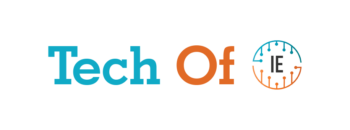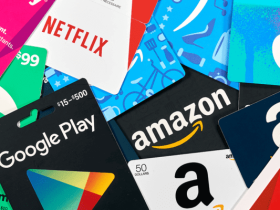The modern workplace revolves around the concept of remote work, as it presents companies with flexibility while enabling access to a wider scope of talent. On the downside, overseeing a distributed workforce comes with its own set of challenges, like monitoring productivity and team integration without physical presence. Remote employee monitoring software Controlio has solved this challenge by providing critical insights in real time into work activities while at the same time encouraging collaboration and accountability. With the use of these tools, organizations are able to optimize their performance and streamline operations all while trusting the remote settings. This article focuses on the role of remote employee monitoring software and its relevance in managing distributed teams, looking at the benefits it provides, key features, ethical use, and its impact on workplaces today.
What is remote employee monitoring software?
Remote employee monitoring software is a category of software tailored to monitor and evaluate the activities of a remote worker during work hours. These systems can monitor time spent on task, application access, milestones, and sometimes even an employee’s actual location. This information is retrieved using AI and advanced analytics to provide actionable data for better optimization, enhanced efficiency, improved resource allocation, and alignment of remote work to even more organizational objectives.
An exemplar of this is the Controlio app, remote employee monitoring software that provides real-time activity tracking, productivity/company reporting, and advanced analytics. Such features allow smooth management of dispersed teams and provide absolute visibility and accountability even during remote work.
Benefits of Remote Employee Monitoring Software
Remote employee monitoring software has an edge over other tools when handling distributed teams. Some of the most important are:
- Enhanced Productivity: The software helps remote employees focus on critical, high-value tasks by sifting through unproductive activities like excessive non-work webpage browsing.
- Greater Responsibility: Monitoring of tasks ensures that responsibility is accepted towards meeting company objectives and deadlines.
- Operations: Managers can make informed decisions about the workflows and their corresponding resources thanks to the data received concerning usage of the tools, time taken for certain tasks, etc.
- Improved Remote Collaboration: Employees on the move or those projecting work remotely are actively engaged, which strengthens communication and consistency among the dispersed teams.
- Achieved Better Team Development: Analytics allows managers to enhance the training, assessment of the performed tasks, and improvement of the processes within the team, elevating the overall performance of the group.
All these advantages demonstrate that employee monitoring software is crucial for businesses dealing with the distributed workforce documentation in 2025.
Remote Employee Monitoring Software: Best Practices
With the best remote employee monitoring software, robust features work seamlessly with user-friendly design to aid employees working from different locations. Look for these features for the year 2025:
- Monitoring Employee Activities in Real Time: Observing application usage and screen activities to provide an up-to-the-minute assessment of work patterns.
- Time Tracking: Keeps a record of the time consumed on certain tasks or projects for effective project management and planning.
- Assessment of Productivity: Allocates scores based on how tasks are done and how much time is spent actively working, identifying the best employees or those who need help.
- Privacy-aware Screenshot Capture: Blurred screenshot capturing at specified intervals to give contextual descriptions while assuring privacy.
- Intended Strategic Decisions Reports: Designed reports given to individuals or teams for their unique needs to streamline decision-making processes.
- Integration: Works with other remote working applications such as Slack, Trello, or other CRM systems to improve remote workflow.
Programs such as the Controlio app provide all mentioned features and more, serving as full solutions for dealing with distributed teams.
Ethical Best Practices for Implementing Remote Employee Monitoring Software
Businesses need to uphold trust while maximizing the advantages of monitoring software, and this can be achieved through ethical and transparent implementation. The following practices can be incorporated:
- Policy Definition and Goal Description
Every employee needs to understand the explanation given to them concerning the measure’s usage and scope so they can appreciate how it will help in productivity and remote work. Advanced illustration will lessen resistance. - Restricted Access
Monitoring employees should be limited to their work tasks, such as the business applications they use or their progress in tasks. Personal data needs to be left out. Compliance with data laws such as GDPR or CCPA needs to be adhered to. - Collaboration and Feedback
Employees need to be engaged with the implementation by providing their feedback and concerns, which helps solve issues at hand. - Encouragement and Recognition
Data should be monitored to enhance employees’ feedback, aid their recognition, and support other workers lacking in areas like time management. - Review
Management needs to understand the reasoning why and how the data is collected, and employees are expected to learn tools that foster efficiency. Regular revisions need to be undertaken to ensure the software is meeting the objectives of the business.
Monitoring productivity in remote work needs to be done using software, which should encourage positive work ethic while allowing business goals to be met. This way, remote work culture can be fostered in a business.
Case Study: Enhancing Distributed Teams Coordination in a Consulting Firm
The Controlio tool is remote employee monitoring software that a mid-sized consulting firm had utilized, all due to a widespread issue with the distributed workforce, which caused—and still causes—delays in fulfilling client deliverables. Following company-wide communication regarding the tool’s intent, it became clear that consultants were inefficiently performing the reporting tasks. Facilitated by the monitoring software, the firm was able to institute automated reporting, which further decreased processing time by 25%. Moreover, the system brought to light numerous underused collaboration tools like Zoom and Asana, which increased training usage. In the span of three months, client delivery times improved, and workflow for employees was faster, resulting in elevated overall employee morale and improved sophisticated paradigms of enduring the firm. This outlines the ethical side of monitoring within organizations and its consequences on managing distributed teams.
Ethical Guidelines
The balancing of monitoring systems on employees with restoring the freedom of manipulation on the system lays down the need for ethical guidelines that need to be executed proactively and ethically. Recommended actions include:
- Restrained removal or modification of pre-obtained consent.
- Monitoring should be conducted only on work-related aspects, and data should be protected via encryption.
- Provide avenues for employees to raise grievances concerning prevailing procedures that are deemed inappropriate, surpassing ethical boundaries with monitoring systems.
Trust in organizations can be maintained to a high extent when the above ethics are considered while using monitoring software aimed at enhancing productivity and accountability.
Closing Thoughts
In regard to controlling remote employees, software like the Controlio app is an essential asset in 2025. It uses sophisticated functionalities while ensuring ethical measures are in place. This way, businesses are able to maximize productivity, encourage responsibility, and facilitate seamless collaboration amongst team members. It is evident that these tools strategically placed will aid in organizational growth while remaining competitive. This is critical as distributed work models continue to reimagine the workplace.










